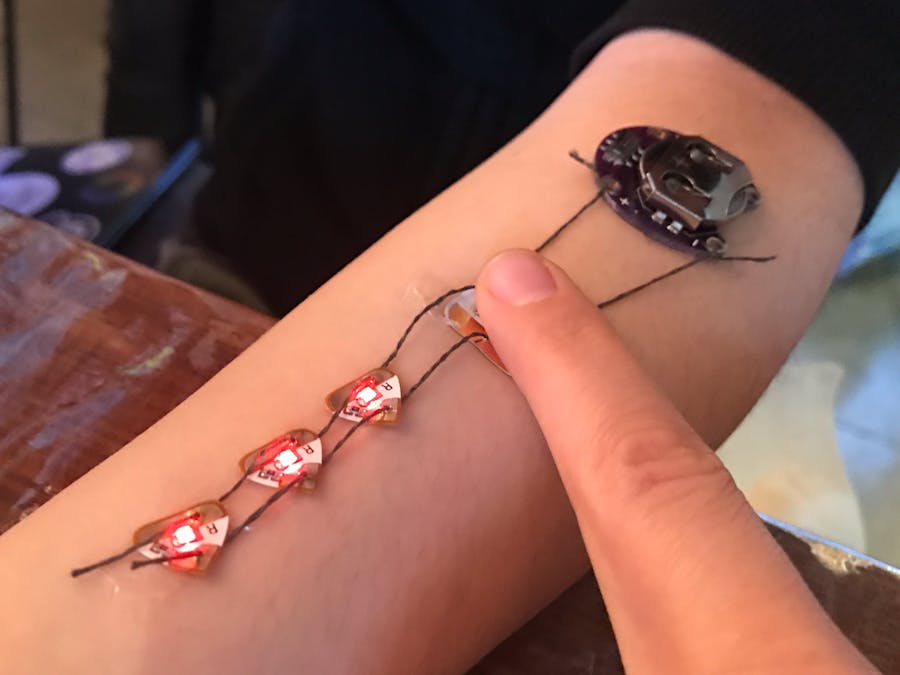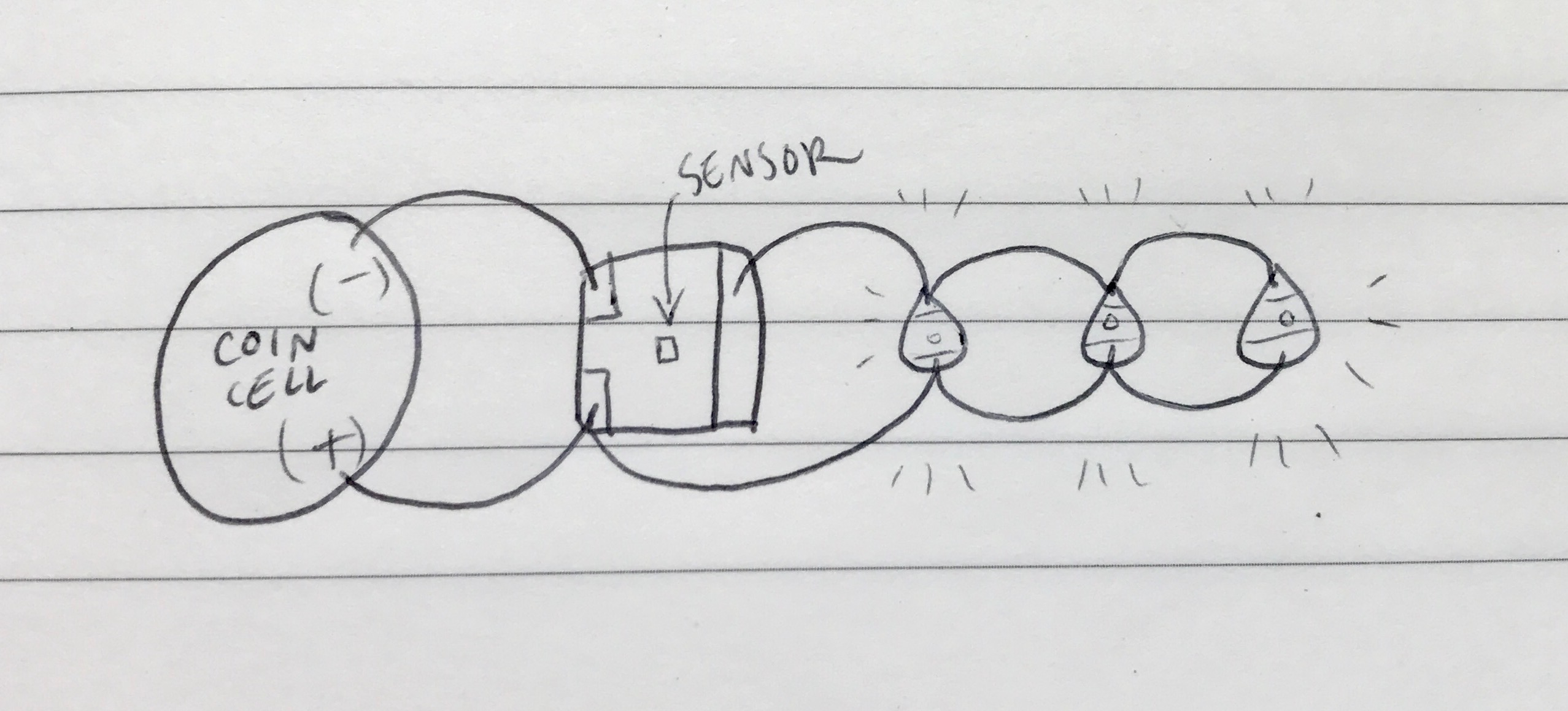For Science Hack Day SF, we built some smart versions of the glowing LED tattoo project! These respond to sound and light sensors. After this one, I built a programmable tattoo that responds to orientation and can also show custom animations.
For this one, you'll need some Circuit Stickers and conductive thread. (You can get it at SparkFun, Adafruit, etc...)
Improvements:
- These ones actually respond to stimuli, instead of just turning on with a switch, so I'm really excited that they work.
- We tied on conductive thread, instead of soldering conductive fabric tape, so the connections should be more flexible and robust. Also, it sits better on the skin: a meandering string is able to stretch with the skin, unlike fabric tape.
- We started using the tape in smaller sections, so instead of one long, continuous piece (which doesn't flex or stretch well), it's broken up or omitted where not needed.
- These are lower-profile, so they look a bit nicer.
Drawbacks:
- We've been using double-sided tape to stick down the stickers (which like to come off) and the thread (so it doesn't catch on stuff). It gets dirty quickly and looks terrible. To fix this, we started cutting tiny bits of the tape and placing them only directly underneath the components. This is really annoying, since it's hard to remove the tape backing, but it looks so much nicer.
Make sure to lay out your circuit realistically, so you get the right amount of thread where it's needed, without big extra loops.
Just follow the Circuit Stickers kit's directions to build any circuit you like. I'll post some later on... (Crunch time!!!)
Be sure to test the circuit before you apply it!!
We were much more successful the second time around; I was able to use smaller pieces of tape to stick things down to Tiffany's arm, so it ended up looking a little nicer.
Make sure that your threads don't cross, or touch another circuit contact: shorts mean a nonfunctional tattoo!
3. ROCK IT!Jonathan pointed out that Tiffany's light-sensitive tattoo could be used as a heartbeat sensor. Just place your finger over the sensor, then put your phone's flashlight behind it, making sure not to let any light spill over beyond your finger. As your heart pumps blood through the finger, it will obstruct the light... making your LEDs glow brighter.
SCIENCE!
Next step: Programmable tattooCheck out the next version, which can be programmed and responds to its orientation!
// Link to this tutorial: bit.ly/ledtat)
















Comments
Please log in or sign up to comment.